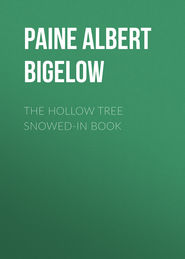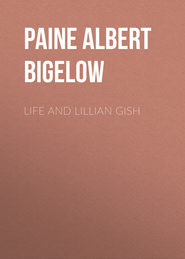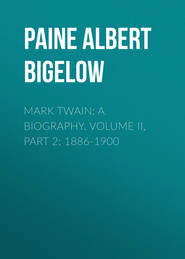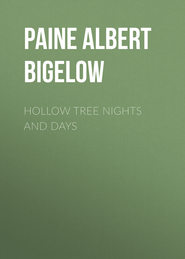По всем вопросам обращайтесь на: info@litportal.ru
(©) 2003-2024.
✖
A Little Garden Calendar for Boys and Girls
Настройки чтения
Размер шрифта
Высота строк
Поля
"The black-eyed Susans must belong to that family, too," said Davy.
"They do, and the daisy, and the marigold, and the zinnia, and the aster, and your lettuce, too, Davy, and many, many more. Whenever you see a flower with a round bunchy center and a rim of petals, like a sunflower – no matter what color or how small it is – you will know it belongs to the Composite Family. I suppose there are more of this family in America than in any other country, but the sunflower is the finest of them all, and the most generally useful. Its seeds are full of fine oil, and are excellent food for cattle and poultry. The Indians sometimes use them for bread. The flowers themselves are full of honey, the leaves, too, are good for cattle, and the stalks make fine fuel. In many places and many countries the sunflowers are cultivated and valued highly. Of course, there are other useful members, and your lettuce is one of the finest salads in the world."
IV
DID YOU EVER SEE THE LITTLE MAN IN THE PANSY?
March was really an exciting month in the little window gardens. With longer and brighter suns, everything grew faster, until the windows began to look full and green, and the children often went outside to look in, and were very proud, indeed, of the pretty show of vines and leaves beyond the glass.
The race of vines became very close. Davy had one bean and Prue one morning-glory which kept ahead of the others, and grew about the same each day. They grew so fast that Davy thought if he would only watch very closely he would be able to see them grow a little, but watch as he would, he never could catch the little vine turning or sending out a new leaf. It was like the short hand of the clock. It went twice around each day, but nobody could see it move.
The corn and the sunflower were having a race, too, and the sunflower was a little ahead, though Davy's corn was a good deal taller when he lifted the points of the leaves.
"I don't think that is fair," said Prue, and the Chief Gardener was called to decide.
"No," he said, "the corn must be measured from where the leaves turn over, until it sends up its tassel, or bloom. Then it may be measured to the top of that. And that may be sooner than you think, too," he added, as he looked down into the healthy-looking green stalk that was fully two feet high. "And just see those vines; why they are more than half-way up the casings already!"
It was the day before Davy's birthday, and Prue was looking anxiously at her pansies. All at once she gave a joyous cry.
"Oh, Papa, a bud! Oh, it truly is, a real sure enough bud!"
The Chief Gardener looked with care.
"Yes," he said, "it is really a bud, and quite a large one, too. It begins to show the color. It's going to be a purple one, I believe."
Prue was fairly wild with excitement.
"Oh, may I pick it to-morrow for Davy's birthday?" she asked.
"I don't believe I would, Prue. It won't be open for a week or more, perhaps. I would wait until it opens."
So Davy's birthday came and passed without flowers from their garden, but they did have radishes, two of them, and these were cut in two and divided around so that each had quite a nice taste, and a leaf of salad, too. The radishes were nearly as big as marbles, little marbles, of course, and very red and beautiful, and Prue put her pansy-pot on the table, and showed the bud, with its purple tip, every time Davy made any mention of his radishes or his lettuce, and with a big cake and other good things they had a very happy time indeed.
But now things began to happen in real earnest. The pansy bloomed – a big velvety, purple bloom, and then there was a yellow bud and a yellow bloom with a purple spot in the center. Little Prue was simply too happy to keep still, and danced in front of her garden almost from morning until night.
Then suddenly they found a bud on the bean vines, and then on the morning-glories, and then there were blooms – pink and purple blooms on the morning-glories, and scarlet and white ones on the beans. Then Davy's corn sent out a plume at the top, a wonderful tassel, and when Davy measured to the top of it he found that it was over three feet high.
"My birthday will be a regular feast of flowers," said the Chief Gardener, and really there was good reason for saying so, for the window casings were white, scarlet, pink, and purple, and the tasseling corn and the broad green leaves of the sunflower were fair and lovely. And Prue's pansy-pot was again on the table, and when the dinner was over, the Chief Gardener drew it toward him, and picking one of the purple blooms that was nearly ready to fall, said:
"Did you ever see the little man in the pansy?"
"No, oh, no," said Prue and Davy together. "Show him to us, Papa."
So then the Chief Gardener pulled off carefully all the petals of the flower, and there, sure enough, sat a little round-bodied man, in a wonderful green chair, made of the outer part, or calyx, of the flower. His head was light green, his coat pale yellow, and he wore a rich, brown collar. Just below him was a round green sack or tube, filled with water, and when the Chief Gardener slitted it down, why there, truly, were two little legs and feet that had been in the little vessel. The children were delighted.
"Oh, tell us about him!" they said. "Who is he?"
"He was a king," said the Chief Gardener, "a poor, feeble king, who always sat on a green throne, with his feet in a tub of water. And his wife and daughters, all very splendidly dressed, used to perch themselves around him on the throne and ask for more money to spend on their fine clothes, and they were often cruel to him because he wouldn't give it to them, crowding him and almost smothering him with their velvet dresses.
"So one day the fairies heard of it, and came to see. And they took pity on the poor king, and the next time the wife and daughters were crowding him on his throne they changed the king and his throne and all the others, with their fine dresses, into a flower. And the flower was the pansy. The velvet petals are the wife and daughters. The calyx is the green throne, and this little man is the poor, sick king with his feet and legs still in the little tub of water, though he can never be worried and scolded again."
"I know that story is true," said little Prue, "for there is the very little man, himself, and oh, see, you can take his coat off, and there is a little green body inside."
Sure enough, it was as Prue had said, and the Chief Gardener explained. "That little body becomes a pod to hold the seeds by and by. The little coat helps to make the seed, too. I won't tell you all the names of these things now, for you could not remember so much. Only try to remember that the green throne is called the calyx, and each little piece of it is a sepal, while the beautiful wife and daughters are called petals, and when taken together are called a corolla, and that this is true of every complete flower."
And so March, too, slipped away. And on one day near the very end of the month, when it had been warm and bright for nearly a week, the Chief Gardener went out into his garden and turned over some of the earth which was getting dry. Davy said that it smelled all new and springy, and reminded him of kite-time. And then the Chief Gardener made two little beds of his own, and in one he sowed some lettuce, and in the other some radish seed, because these were the things most likely to grow from an early planting. Davy and Prue watched and helped, and were very anxious to have little beds of their own, but the Chief Gardener told them that they would better wait at least another month before they did any outside gardening. Their window gardens were just coming to their best time, he said, and planting outside so early was always risky.
And that night when the wind went to the northeast, and a cold rain set in, that turned to snow before morning, and made the ground all white and glassy like December, they were very glad they had not made any beds, and were sorry for the Chief Gardener's little beds of vegetables, outside beneath the cold, cold snow.
APRIL
I
THE YELLOW DUST IS A FOOD FOR THE SEED
APRIL showers began early. The sun shone out brightly on the morning of the first day, but by breakfast time the rain was pattering down, and all the rest of the day there were showers, one after another, that streamed down the garden windows and made a little river of the path outside. Davy said he had never seen it rain so much in one day, and Prue said it was too bad. The Chief Gardener said it was an April fool.
But there was reason to be happy, after all. Whether it was the shower outside; or the sun that was trying to shine; or just because it was April, Prue and Davy did not know, but Prue all at once found a bud on her sunflowers and Davy about the same time discovered a tiny brown silky bunch on his corn, the beginning of the ear.
Then they forgot all about the rain, or at least they did not care so much, and got their books and their little table and sat down by their garden, which was now a real garden, of real flowers and vegetables, and read some stories about other little people, and looked at the pictures and talked about what they would do when warm weather came and they had a still bigger garden outside.
And that night, when the Chief Gardener came home, he had to look at the corn and the sunflower the first thing, and say, "Well, well," every time Prue told him how she had first seen the bud, which was a good many times, and he had to explain to Davy all about the corn silk, and the little ear that was still behind the rough green leaf, and how the dust, or pollen, dropping down from the tassel above helped to make the corn swell and grow on the ear.
"It is so in every flower, the yellow dust is a food for the seed. In most plants the seed-pod and the food-dust or pollen are all in one flower, but with the corn they are separate, as you see. Did you ever notice, Davy, how much a cornstalk looks like an Indian, with plumes, and its ear, like a quiver for holding arrows?"
"Oh, is that why people sometimes call it Indian corn?" asked Davy.
"No, that is not the reason. At least, there is a better one which I will tell you when we have had our dinner."
So by and by, when dinner was over, and Prue had two servings of pudding because she didn't care for chocolate cake – one very little serving, of course, the Chief Gardener and Davy, and big Prue and little Prue all went into the library, and the Chief Gardener told the story of
II
THE COMING OF THE CORN
"You remember," said the Chief Gardener, "how I told you about the first sunflowers – "
"Yes," put in Prue, "about that wicked Kapoka, who pushed poor Ahlogah from the high rocks. Oh, I hope he is not in the corn story, too."
"No, he isn't in the corn story, but it was, perhaps, about that time that the corn came to the American Indian tribes, for the corn was first found in America, and it is a true Indian plant like the sunflower. Like the sunflower, too, it came once upon a time.
"Well, then, once upon a time, there was a year of famine. The winter had been very cold, and almost all the wild game, upon which the Indians then lived, had either died or gone out of the country. The fish, too, seemed scarce and hard to catch, and the wild fruit had been winter-killed. There was little to eat during the winter, and even when spring came it was not much better, though by and by some of the game came back and there were more fish in the streams.
"Still it was very hard to get enough food, and every bird and animal was killed wherever found, and brought to the camps to be eaten.
"But one day there flew down very close to one of the very large camps a big bird, such as no one of the tribe had ever seen before. It was not a hawk, nor an eagle, for it was a golden yellow, and it seemed to have come a very long way. It sat quite still, and its wings drooped, and it did not seem frightened when the wondering and hungry Indians came nearer to look at it.
"Then one or two Indians began stringing their bows to shoot the great bird for food. But others said, 'No, let us not harm the stranger. He has come from a far country. And see, the color is golden, like the sun. Perhaps, the sun has sent a messenger, as a good omen.'











